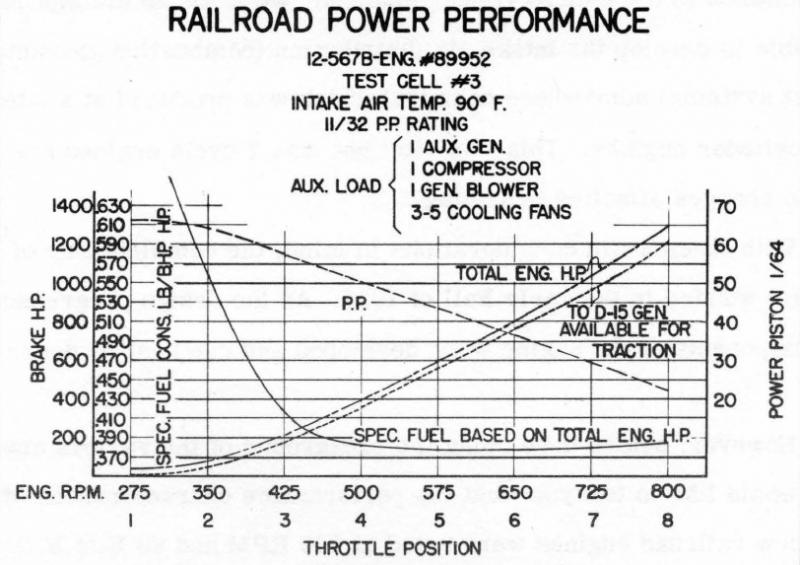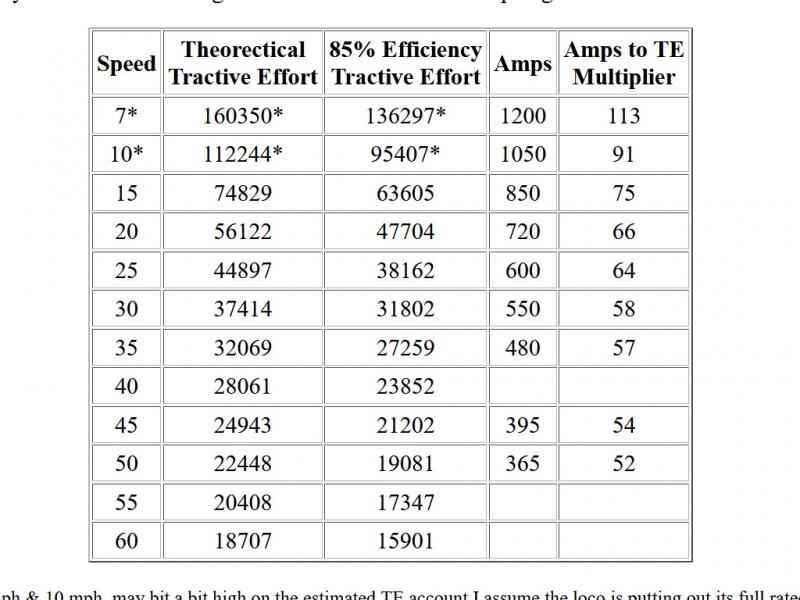darwins, on 26 August 2021 - 10:49 PM, said:
For North American locos I've found efficiencies in the most modern designs to be higher than 85% --- low to mid 90%s. That's something the manufacturers like to overstate...test docs for efficiency are hard to come by for every loco...but 85% is a good place to start from.
Most Tractive Effort vs Power formulas use a built in eff. of 83 to 85 percent, if I remember correctly. AFAIK ( from readings in the forum posts ) the OR code also uses a constant eff multiplier....which is probably in that range.
The formula I use has efficiency as one the variables...which makes customizing the curves a little easier...especially if you find good test data.
Power needed for the auxiliaries does vary for NA locomotives, when documented in the manuals ( not too often, or you have to dig into the manual and read the whole thing ) - can be from a little above what you stated --- 50hp ( never found any values lower than 50hp ) to 100hp, but I have found documentation of power losses from 125hp to 225hp.
When I cannot find good data I've settled upon using 130hp to 150hp.
I'm thinking that Max TE should be available for each notch in the curves but limited by the design of the traction motors. I hope a member with more knowledge or experience with the subject will post.
I do not believe the OR code currently supports traction motors vs. amperage ( or gearing vs. speed ) in diesel-electric locomotives.
MSTS has MaxCurrent parameters in the eng file but from what I read it is not related to the traction motors, but rather to the amount of current for use --- the Richter manual uses the term "transformer" and states "mainly used to display the proper motor current on cab ammeter".
I don't know if OR uses this MSTS parameter.
Al Krug's document is interesting in that shows how to construct interrelated tables that could be used to limit tractive effort based upon amperage for a specific locomotive. I'm still in the process of trying to understand what variables need to be known, and how to construct a set of tables for a specific locomotive.
It has been interesting & entertaining teaching myself about the physics of locomotives, the journey continues. The more I learn the more I know...how little I know.

 Log In
Log In Register Now!
Register Now! Help
Help









